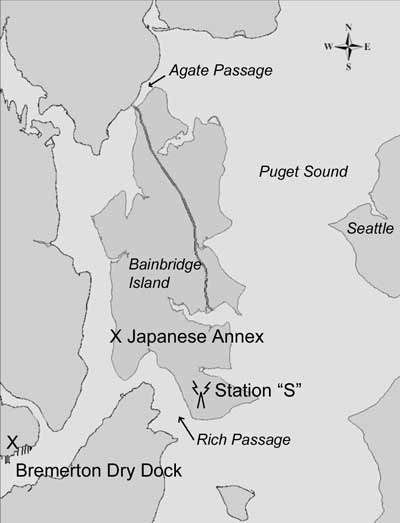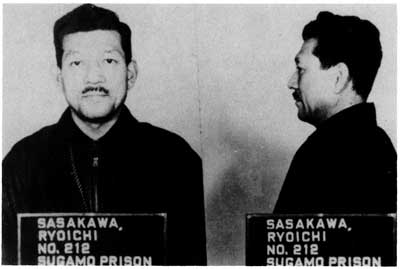Bainbridge Island Japanese American Memorial Ignores Wartime Realities
Lee Allen
March 15, 2007
The Politics of History
In the early 1980's a congressional commission, ignoring pre-Pearl Harbor intelligence reports and ignorant of recently declassified decoded Japanese messages, conducted a one-sided investigation of the Japanese evacuation from the West Coast during World War II. [Note 1]
Its conclusion was that the evacuation was largely caused by "racial prejudice, wartime hysteria, and a failure of political leadership."
Since then, through the miracle of racial special-interest politics, more than $16 million dollars of taxpayer money has been spent by the Federal Government and California and Washington states in support of this politically approved version of history. Another $38 million is in the pipeline. The result has been a seemingly endless number of projects, movies, books, TV shows, school curricula, museum displays, etc. that propagate this same biased version of the event. Not a penny has been spent telling wartime America's side of the story. [Note 2]
So one-sided has the effort been that the Smithsonian National Museum of American History even accepted a major donation from a Japanese "Class A" war criminal to help fund its flawed exhibition on the subject. [Note 3]
The Bainbridge Island Memorial Park is merely the latest million dollar effort to revise history. This brief pamphlet tells part of the other side of the story.
The Island
In 1941, as it does now, Bainbridge Island sat on the flank and within view of almost all naval and maritime traffic entering the Port of Seattle and various facilities in Puget Sound. Additionally, it guarded the entrance to U.S. Navy facilities at and near Bremerton. [Note 4]
 |
| Bainbridge Island, now as in 1941, is at the center of naval and maritime activity in Elliott Bay (Seattle Harbor) and Puget Sound. |
All ship traffic deploying to the Pacific Theater from the Seattle area passed by the island. Ships returning for repairs at the Bremerton Dry Dock had to go through Rich Passage on the south end of the island or Agate Passage on the north. The entire island was included in the "Bremerton Protective Defense Area."
Also, located on the island were training facilities related to communications and code operations. On the south end of the island was top-secret Station "S" which intercepted classified Japanese message traffic, including the famous 14-part message delivered by the Japanese Ambassador shortly after the attack on Pearl Harbor. Knowledge by Japan that we were intercepting and decoding such traffic would have been devastating to U.S. security. [Note 5]
Reference Notes
Note 1
Much of the Intelligence section of the Commission on Wartime Relocation and Internment of Civilians report, Personal Justice Denied, is devoted to the “findings” of an admitted intelligence amateur named Munson, who traveled the West Coast prior to Pearl Harbor. Note the absence of references to reports from military organizations. Shortly after Pearl Harbor, Munson, who is frequently quoted as an expert on the Japanese situation and is claimed to have absolved Japanese Americans of being a threat, told the FBI that by picking up resident aliens they were only dealing with half the problem. Citizens were the other half. (See last three paragraphs and following page.)
The so-called Magic Addendum to Personal Justice Denied was the hurried response by the Commission’s General Counsel to revelations about the Magic intercepts. Note that a judgment of “puffery” by Imperial Japanese officials is a center piece of this document. Also, note that since no specific individual is identified (this is wrongly contended) there was no threat and, therefore, no change needed to be made to the Commission’s conclusions.
Regarding the one-sidedness of the Commission hearings see this letter from John J. McCloy, former Assistant Secretary of War in the Roosevelt Administration and a man deeply involved in the evacuation. In it he describes his experiences. McCloy was later High Commissioner of Germany and President of the World Bank.
Note 2
The figure of $16 million is obtained by adding the $5 million provided by the Federal Government in Public Law No. 100-383 to the $1 million a year from 1996 to present provided by the California Civil Liberties and Public Education Project (CCLPEP). Follow this link for details of the program and the recent recipients of grants. The term “research” in all of these programs refers to repetitive presentation of the congressional commission’s findings. See this page for instructions on how work and events must be described.
When David Lowman’s book Magic: The Untold Story of U.S. Intelligence and the evacuation of Japanese from the West Coast in WW II was proposed for distribution to California schools as part of a grant, it was dismissed out of hand.
Note 3
See critique of the Smithsonian exhibit and Appendix 15 for information on Ryoichi Sasakowa, a Class A war criminal.
Note 4
Listing of the various activities in the area of Bremerton, Seattle, Bainbridge Island and Puget Sound.
Note 5
Here is a popular account of Fort Ward and the activities of Station “S.”
